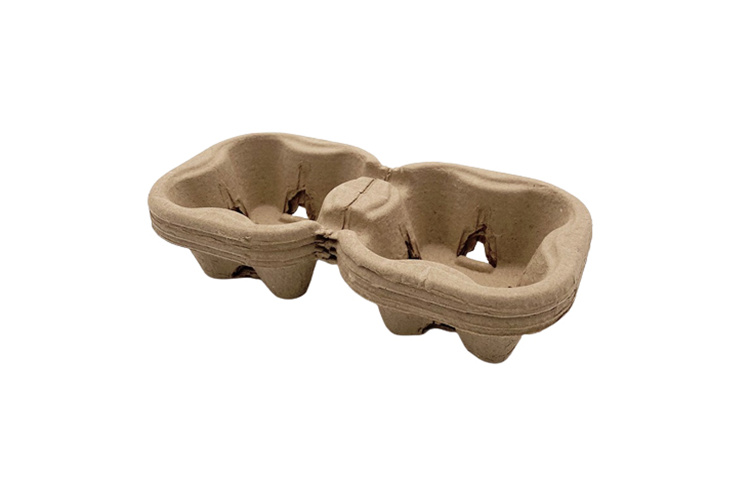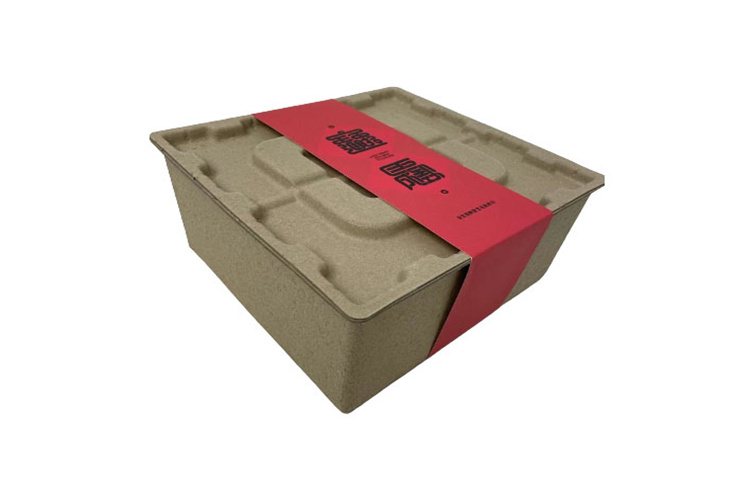In today’s business environment, sustainability isn’t just a buzzword; it’s a necessity. Companies are increasingly turning to eco-friendly solutions to reduce their carbon footprint, meet regulatory requirements, and appeal to a growing segment of environmentally-conscious consumers.
One such solution that’s gaining traction is molded pulp packaging.
Companies like BonitoPak are at the forefront of providing sustainable packaging solutions that are both effective and environmentally friendly. Here’s a comprehensive guide on how to implement molded pulp packaging in your supply chain.
Understanding Molded Pulp Packaging
Molded pulp packaging, also known as molded fiber packaging, is made from recycled paperboard and newsprint. It’s a sustainable alternative to traditional plastic packaging and offers several benefits, including biodegradability, recyclability, and cost-effectiveness. Molded pulp packaging is commonly used for protective packaging, food containers, and even electronics.

Benefits of Molded Pulp Packaging
1. Eco-Friendly
- Biodegradable:Molded pulp packaging is made from natural fibers that break down easily in the environment. Unlike plastic, which can take hundreds of years to decompose, molded pulp typically biodegrades within a few months.
- Recyclable: Since it’s made from recycled paper and cardboard, molded pulp can be recycled again after its initial use, contributing to a circular economy and reducing the need for virgin materials.
- Reduced Carbon Footprint:The production of molded pulp uses less energy compared to plastic manufacturing, leading to a lower overall carbon footprint.
2. Cost-Effective
- Lower Material Costs:Molded pulp packaging often costs less than plastic alternatives because it utilizes recycled materials.
- Reduced Disposal Costs:Since molded pulp is biodegradable and recyclable, disposal costs are often lower, and companies can avoid landfill fees.
- Durability and Protection:Despite being lightweight and cost-effective, molded pulp provides excellent protection for products, reducing the risk of damage and associated costs during shipping.
3. Versatile
- Customizable Shapes and Sizes:Molded pulp can be designed and molded into virtually any shape or size, making it suitable for a wide range of products, from fragile electronics to robust industrial components.
- Branding Opportunities:The surface of molded pulp can be printed with logos, instructions, and other branding elements, helping companies maintain their brand identity even with sustainable packaging.
4. Durable
- Shock Absorption:Molded pulp packaging offers excellent shock absorption, making it ideal for protecting fragile items during transit.
- Temperature Resistant:It performs well across a range of temperatures, ensuring that products remain protected in various environmental conditions.
- Moisture Resistant:While not waterproof, molded pulp can be treated to resist moisture, providing an additional layer of protection for sensitive products.
5. Regulatory Compliance
- Meeting Environmental Standards:Many countries have stringent regulations regarding packaging waste and environmental impact. Using molded pulp packaging helps companies comply with these regulations.
- Corporate Social Responsibility (CSR):Adopting sustainable packaging solutions like molded pulp aligns with CSR initiatives, demonstrating a commitment to environmental stewardship and ethical business practices.
6. Consumer Appeal
- Growing Eco-Consciousness:As more consumers become aware of environmental issues, they prefer to support companies that use sustainable practices. Molded pulp packaging can enhance a company’s image and appeal to this demographic.
- Positive Brand Perception: Customers often associate sustainable packaging with higher quality and better corporate values, leading to increased brand loyalty and trust.
By embracing molded pulp packaging, companies can not only reduce their environmental impact but also achieve cost savings, regulatory compliance, and enhanced brand reputation. It’s a win-win solution for businesses looking to align with modern sustainability standards while maintaining efficiency and effectiveness in their supply chains.

Steps to Implement Molded Pulp Packaging
1. Evaluate Your Current Packaging Needs
Start by assessing your current packaging requirements. Identify the types of products you need to package and the specific needs of each. Consider factors like:
- Size and weight of the products
- Fragility and need for protection
- Branding and design requirements
2. Research and Partner with a Reliable Supplier
Finding the right supplier is crucial. Look for companies like BonitoPak that specialize in sustainable packaging solutions. Ensure they have a track record of delivering high-quality products and can meet your volume requirements. Evaluate their product offerings and customization options.
3. Test the Packaging
Before fully integrating molded pulp packaging into your supply chain, conduct thorough testing. This includes:
- Fit and Functionality:Ensure the packaging fits your products perfectly and provides adequate protection.
- Stress Testing: Test the packaging under various conditions (e.g., drop tests, compression tests) to ensure it can withstand the rigors of shipping and handling.
- Customer Feedback:Conduct a pilot run and gather feedback from customers on the new packaging.
4. Integrate into Your Supply Chain
Once testing is complete and you’re satisfied with the results, it’s time to integrate molded pulp packaging into your supply chain. This involves:
- Inventory Management: Adjust your inventory levels to include the new packaging materials.
- Training:Train your staff on how to use and handle the new packaging.
- Logistics Coordination: Work with your logistics team to ensure smooth implementation, including storage, transportation, and handling of the new packaging.
5. Monitor and Optimize
After implementation, continuously monitor the performance of your molded pulp packaging. Collect data on:
- Damage Rates:Track any incidents of product damage during shipping.
- Customer Feedback:Gather ongoing feedback from customers about the packaging.
- Cost Analysis:Compare the costs associated with the new packaging versus your previous solution.
Use this data to make necessary adjustments and optimizations.

Overcoming Challenges
Implementing a new packaging solution can come with challenges. Here are some common ones and how to address them:
1. Initial Costs
While molded pulp packaging can be cost-effective in the long run, the initial investment might be higher compared to traditional packaging. To mitigate this:
- Bulk Purchasing:Buy in bulk to reduce costs.
- Supplier Negotiation: Negotiate terms with your supplier for better rates.
- Cost-Benefit Analysis:Highlight the long-term savings and benefits to justify the initial investment.
2. Design and Customization
Ensuring the packaging meets your branding and design needs is crucial. Work closely with your supplier to:
- Prototype Development:Develop prototypes and refine them until they meet your requirements.
- Customization Options:Explore the customization options available, such as printing, coloring, and molding shapes.
3. Supply Chain Disruption
Switching to a new packaging solution can temporarily disrupt your supply chain. Minimize this by:
- Gradual Implementation: Implement the new packaging in phases to avoid major disruptions.
- Clear Communication:Maintain clear communication with all stakeholders, including suppliers, logistics partners, and staff.
-

colorful molded paper pods
Case Study
To illustrate the effectiveness of molded pulp packaging, let’s look at an example.
Challenge
A leading electronics company wants to reduce its environmental impact by switching from plastic to sustainable packaging. The company needs a solution that would protect delicate electronic components during shipping.
Solution
BonitoPak provides custom-molded pulp packaging tailored to the company’s specific needs. The new packaging was rigorously tested and proved to be highly durable and protective.
Outcome
The company can successfully integrate the new packaging into its supply chain. The results included:
- Reduction in Environmental Impact: A significant reduction in plastic waste.
- Cost Savings: Long-term savings due to lower material and disposal costs.
- Customer Satisfaction: Positive feedback from customers who appreciated the eco-friendly packaging.
Conclusion
Implementing molded pulp packaging in your supply chain is a smart move towards sustainability and cost-efficiency. By following the steps outlined above and working with a reliable supplier like BonitoPak, you can make a seamless transition to eco-friendly packaging.
Not only will this help protect the environment, but it will also enhance your brand’s reputation and appeal to a growing base of eco-conscious consumers. Embrace the change today and take a step towards a more sustainable future with molded pulp packaging. Contact us to learn more about our molded pulp packaging solutions and how you can integrate them into your supply chain.




